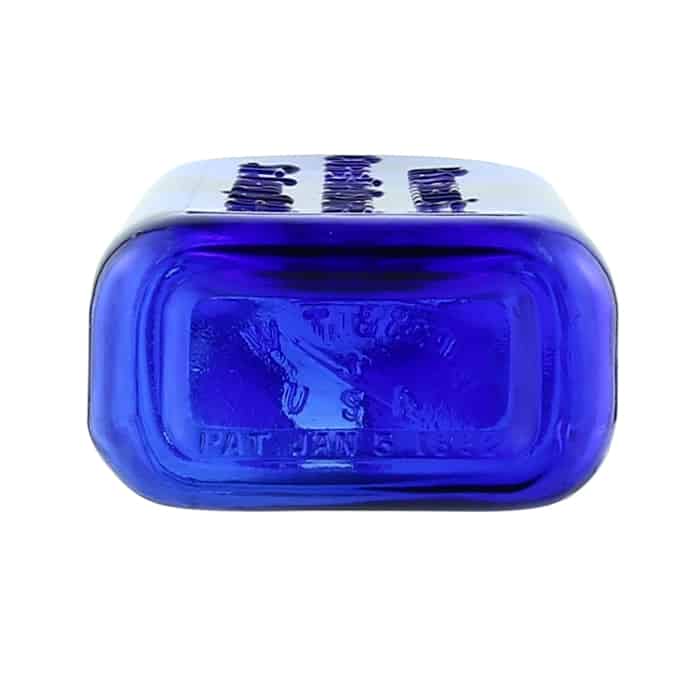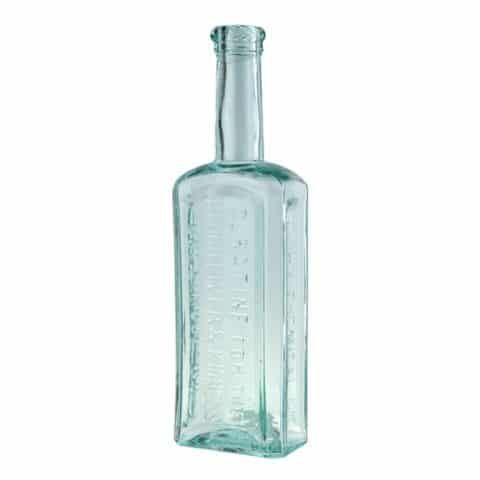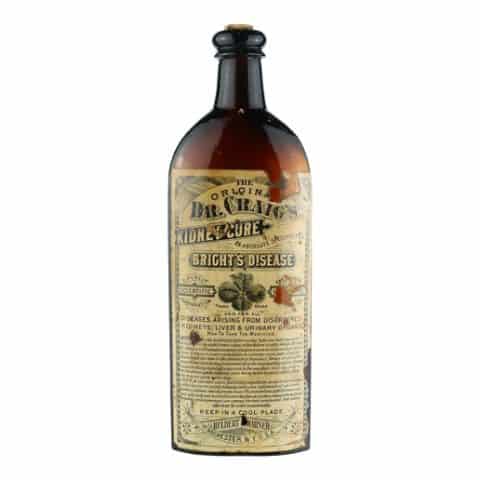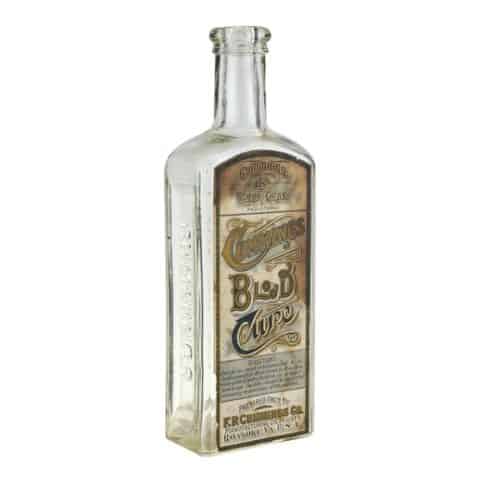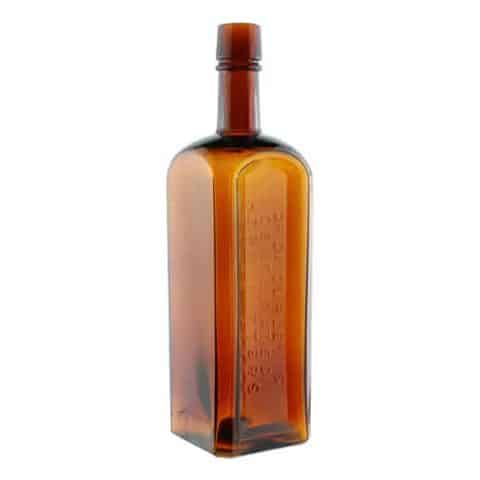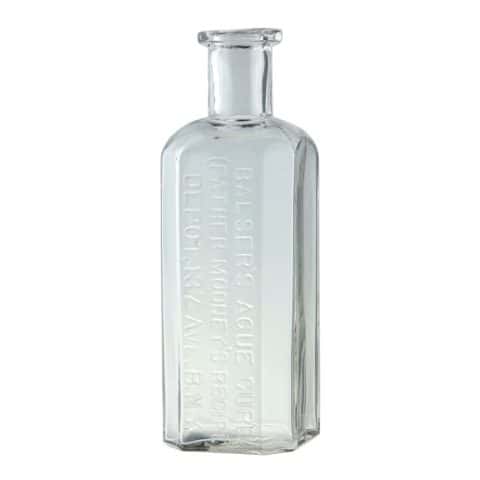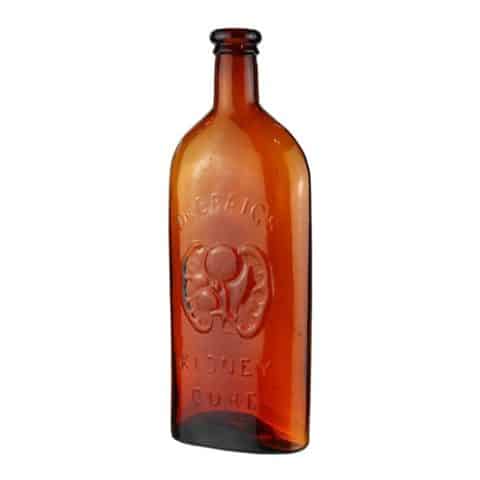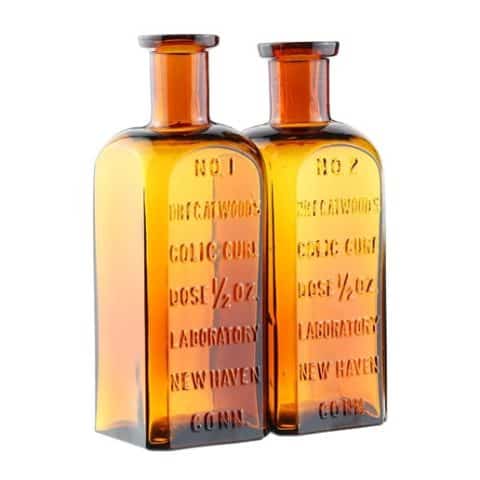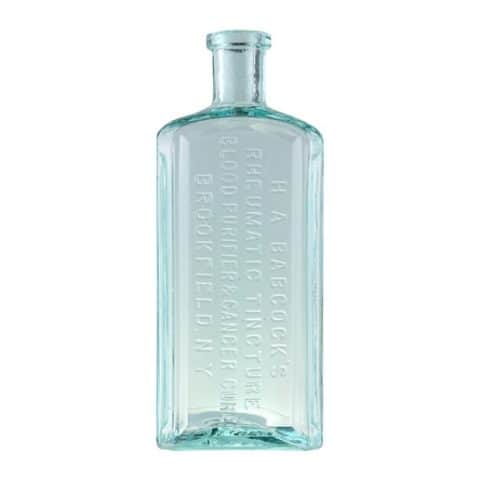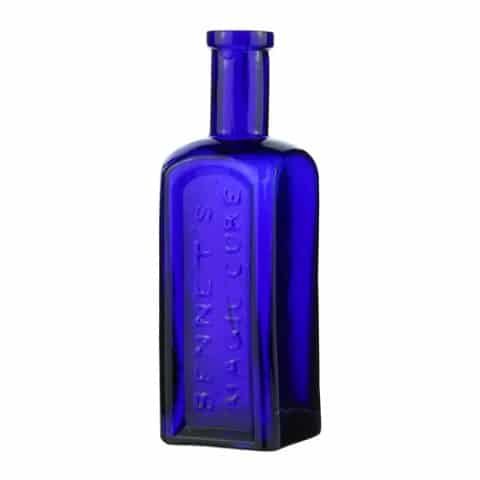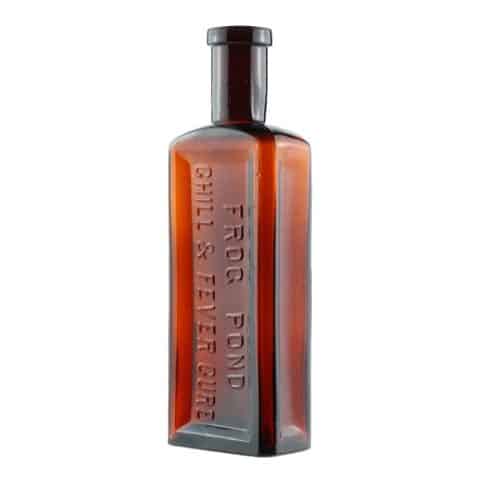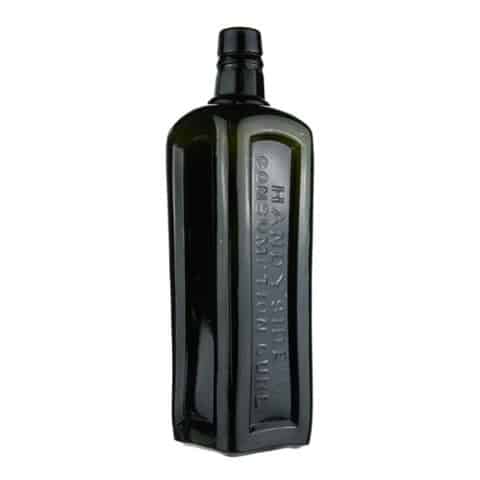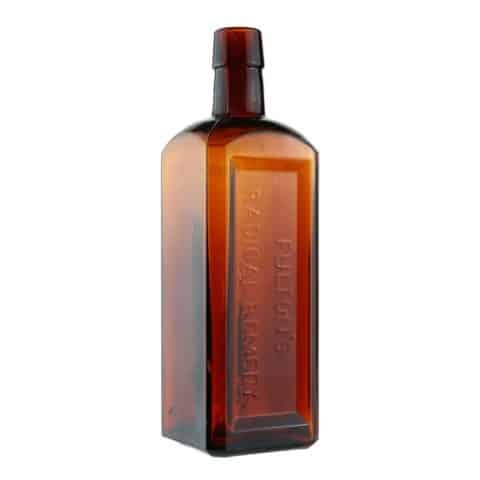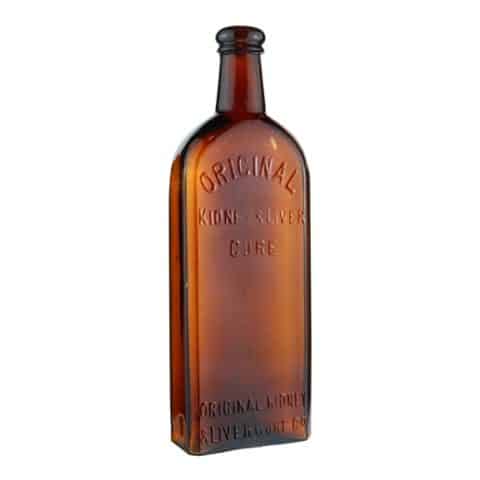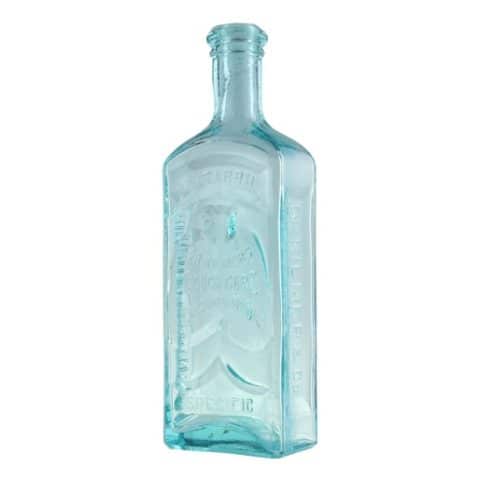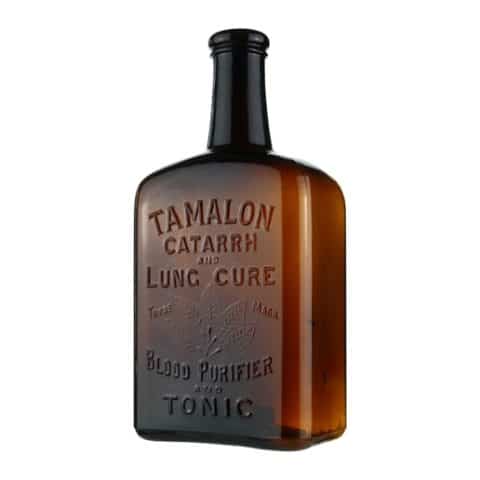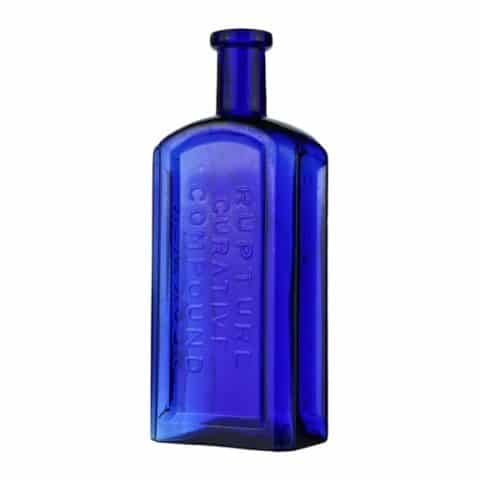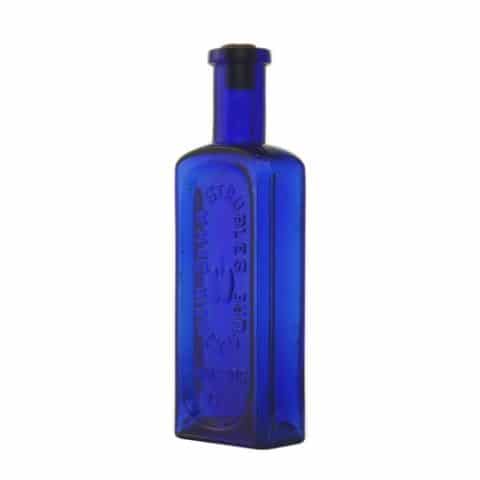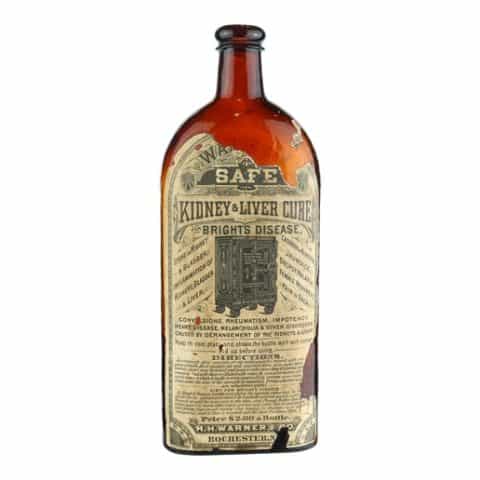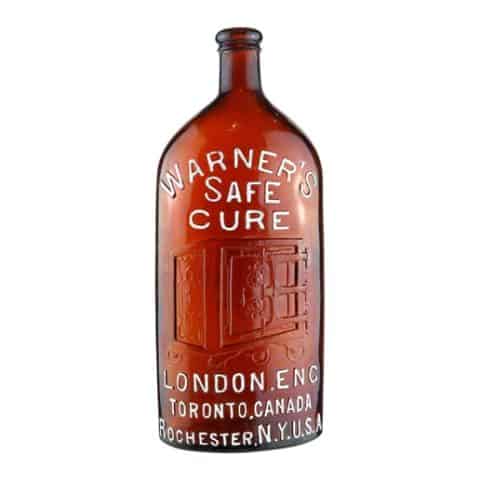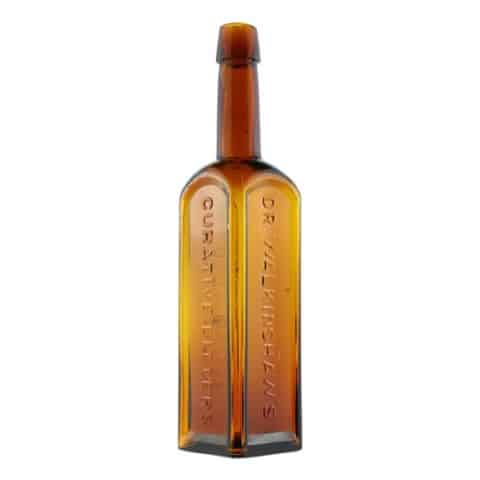Ramsdell’s Cure For Dandruff St. John, N.B.
Ramsdell’s
Cure For Dandruff
St. John, N. B.
W. T. Co PAT USA Jan 5 1892
John W. Ramsdell, Saint John, New Brunswick, Canada
Rectangular Cobalt Blue Druggist Bottle
Provenance: Bob Jochums Collection
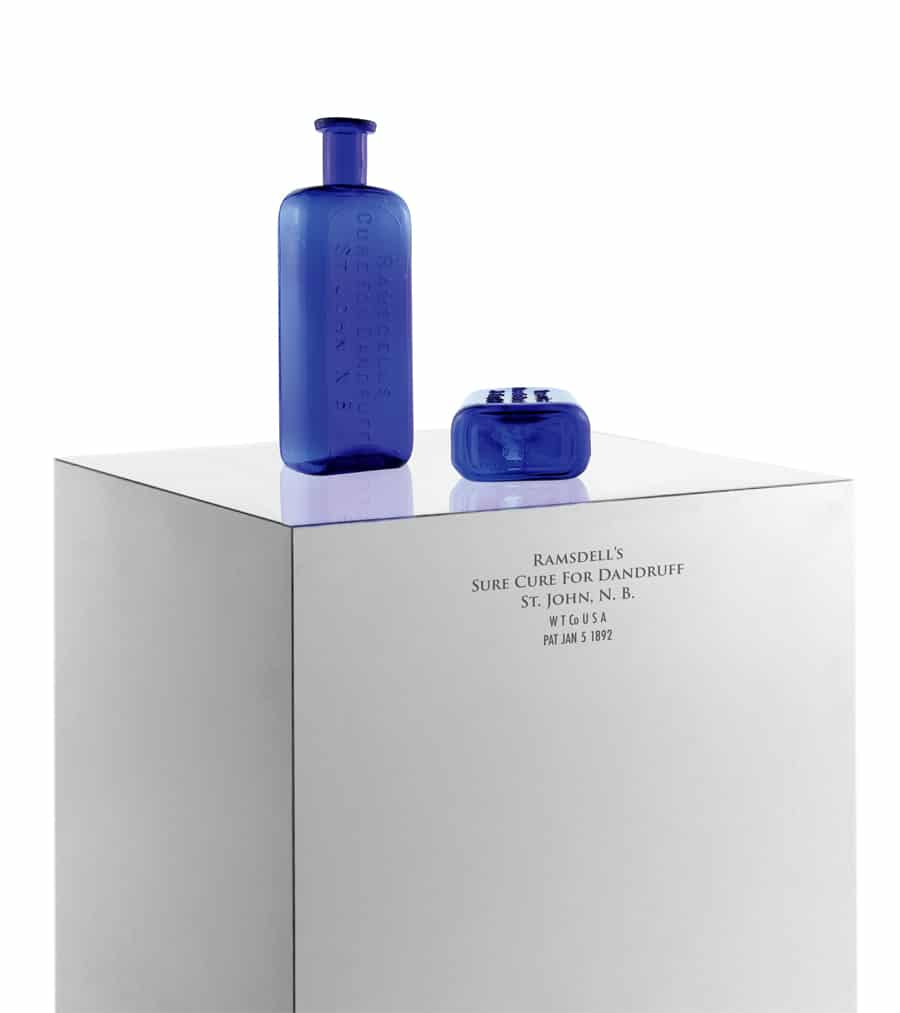
John W. Ramsdell Esq. was a lifelong hairdresser who manufactured and sold fancy goods and hair products while living and working out of Saint John, New Brunswick, Canada, primarily in the 1880s and 1890s. At one time, his retail name was “American Hair Store.”
Census records note that Ramsdell was born in America in 1836 with an English heritage. He commissioned Whitall Tatum Co. to make him a cobalt blue bottle to sell his popular “Cure for Dandruff” that he brought to market in 1887. Ramsdell also advertised his “Peerless Hair Dyes” and “Blondine,” a face preparation. He was so confident of his Dandruff Cure that he offered $100 if there was a case that the Dandruff Cure did not effect a permanent cure. For most of this period, John Ramsdell boarded with his wife Nellie, five years younger, at the Queen Hotel in Saint John.

Madame Ramsdell operated the retail portion of the hair business in Rooms 9 and 10 at the Carleton House on Argyle Street, where she advertised her fine line of hair goods and toilet articles. She said she had a large quantity of the best perfume, by the ounce and bottle, and plenty of “Ramsdell’s Dandruff Cure” and “Peerless Hair Dyes.” She would also do “ladies’ and children’s shampooing, hair dressing, and hair dying.” Madame Ramsdell would add other locations in town and Halifax and advertise “Madame Ramsdell’s Ladies and Children’s Shampoo Parlors where you will find ladies and gents’ wigs, braids and bangs for sale, and manufactured to order at short notice.”
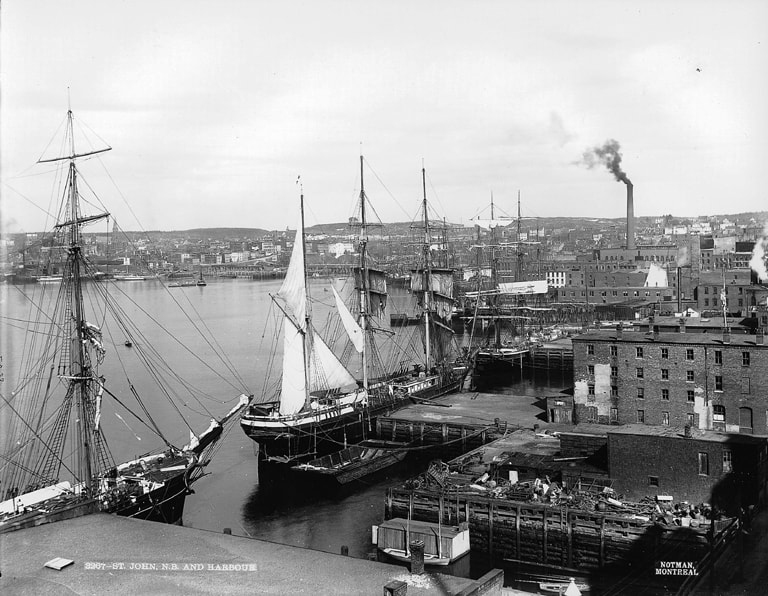
Saint John is an Atlantic seaport city located on the Bay of Fundy in the province of New Brunswick, Canada. It is the oldest incorporated city in Canada, established by royal charter on May 18, 1785, during the reign of King George III. French explorer Samuel de Champlain landed at Saint John Harbour on June 24, 1604 (the feast of St. John the Baptist), where the Saint John River got its name. However, Mi’kmaq and Wolastoqiyik peoples lived in the region for thousands of years prior—calling the river “Wolastoq.” The Saint John area was an important area for trade and defense for Acadia during the French colonial era. Fort La Tour was a pivotal battleground in the city’s harbor during the Acadian Civil War.
After over a century of ownership disputes over the land surrounding Saint John between the French and English, the English colonists deported the French colonists in 1755. They constructed Fort Howe above the harbor in 1779. In 1785, the City of Saint John was established by uniting the two towns of Parrtown and Carleton on each side of the harbor after the arrival of thousands of refugees from the American Revolution who wished to remain British and were forced to leave their U.S. homes. Over the next century, waves of immigration via Partridge Island, especially during the Great Famine, would fundamentally change the city’s demographics and culture. There were at least forty different druggists in Saint John at the turn of the century who sold an astounding number of medicine and cures from various size drugstore bottles embossed with their names and or product.
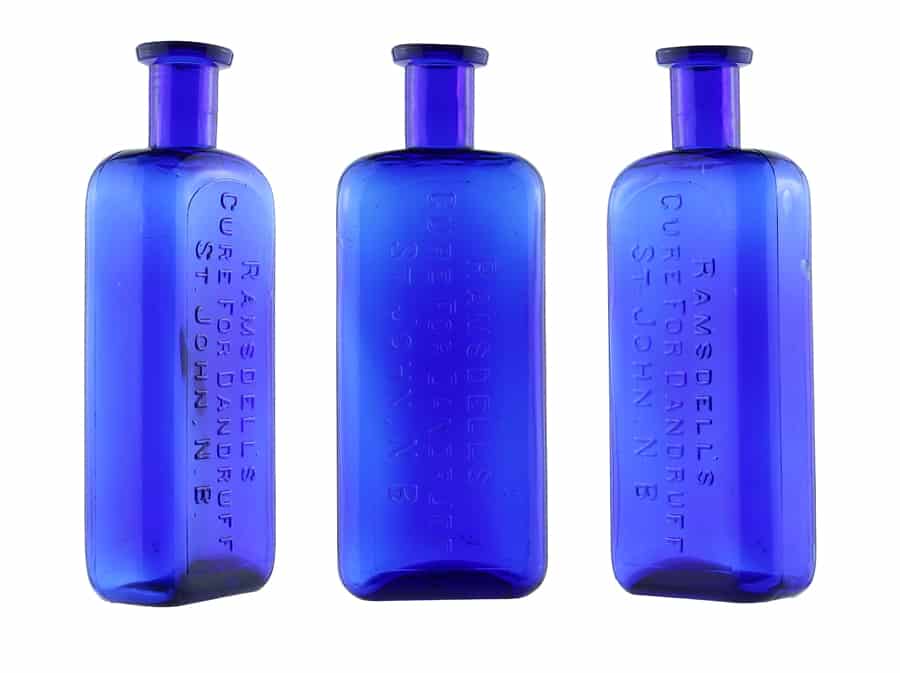
Our museum example of a cobalt blue “Ramsdell’s Cure for Dandruff” bottle is rectangular with rounded corners and measures 7 inches by 2 ½ inches by 1 ½ inches. The bottle, in near-mint condition, is embossed on the face in sans serif capital letters ‘RAMSDELL’S CURE FOR DANDRUFF ST. JOHN, N. B.’ in three centered lines from shoulder to base. The initial capital letter is larger in all embossed face panel words. The entire typographic arrangement is set within a faint arched door shape panel. The bottle sides and back are blank and would have been where John Ramsdell placed his label. The base is embossed ‘W T Co U S A PAT JAN 5 1892’ in three lines. This patent date is for the bottle design (pictured below).
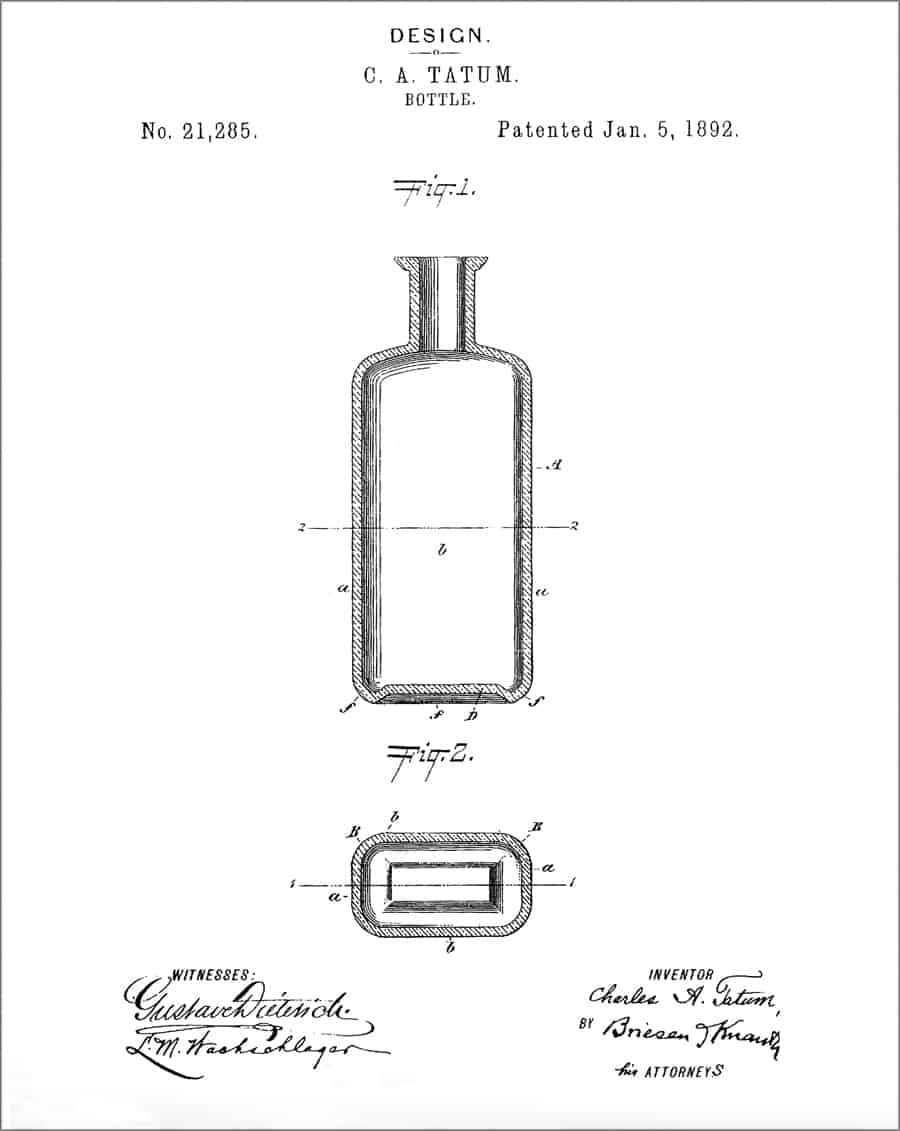
Whitall Tatum Co. was in business for over a century and was one of the first glass factories in America. The glassworks operated in Millville, New Jersey, from 1806 through 1938. The location was ideal for making glass because silica-based sand was plentiful in southern New Jersey. Antique bottle and glass collectors prize Whitall Tatum druggists’ bottles and vials, demijohns, carboys, perfume, chemical, preserve jars, and other types of bottles and insulators.
The company developed several formula innovations for making glass and bottle manufacturing methods. At first, bottles were cast in metal molds, which left a casting line, and later ceramic and wood casts were developed for flint glass, which allowed the glass to be molded without a casting line. Glass types included flint glass, blue and green glass, and artistic colored swirls, used for decoration and paperweights often made by the glassworkers during their lunch hour.

Primary Image: Ramsdell’s Cure for Dandruff, St. John, N.B.” bottle imaged on location by Alan DeMaison, FOHBC Virtual Museum Midwest Studio.
Support: Reference to The Dating Game: Whitall Tatum & Co. by Bill Lockhart, Carol Serr, David Whitten, Bill Lindsey and Pete Schulz, FOHBC Bottles and Extras, Summer 2006.
Support: Reference to Drugstore Bottle Designs & US Patents
Join the FOHBC: The Virtual Museum is a project of the Federation of Historical Bottle Collectors (FOHBC). To become a member.

